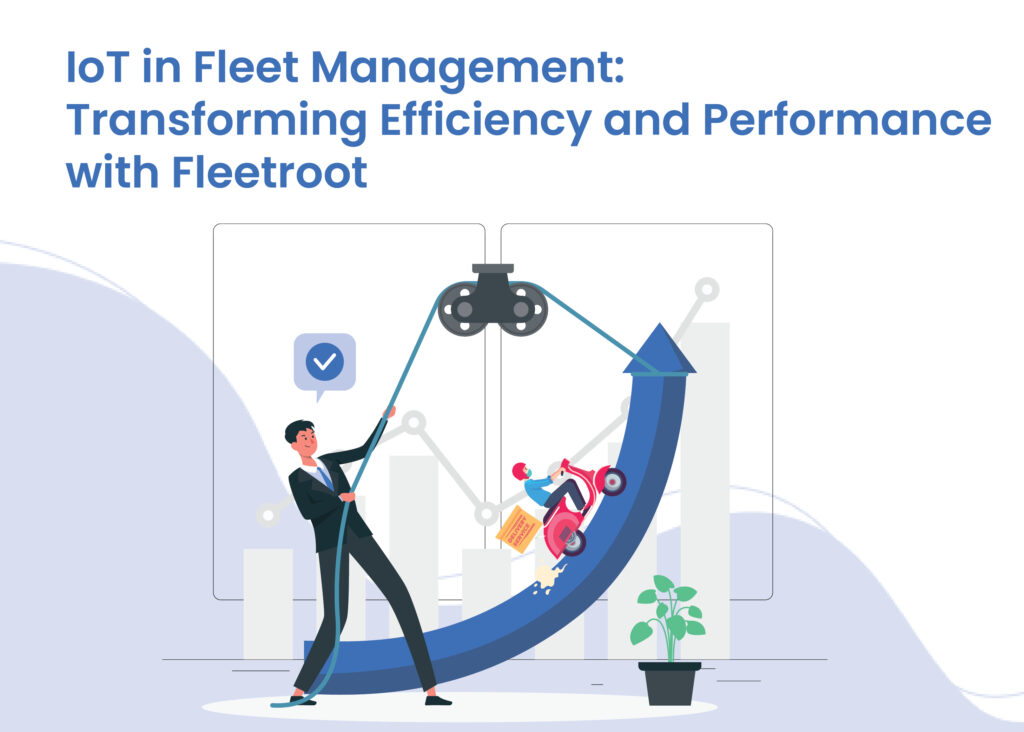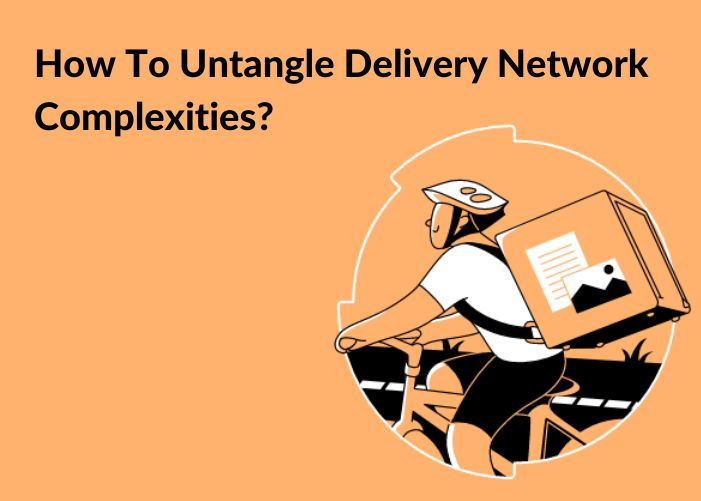In the ever evolving world of fleet management, Fleetroot is committed to harnessing the transformative potential of IoT (Internet of Things) technology.
Our mission is to optimise fleet operations, enhance efficiency, and drive superior performance. In this comprehensive guide, we delve deeply into three critical facets of IoT in fleet management:
Table of Contents
- Maintenance and Diagnostics
- Cargo and Asset Tracking
- Integration with Other Technologies
Maintenance and Diagnostics
- Proactive Maintenance with IoT
Effective fleet management hinges on the seamless operation of vehicles. We leverage IoT technology to enable proactive maintenance, a cornerstone of keeping fleets running smoothly.
1.1. SensorDriven Maintenance Alerts
Our embedded sensors continuously monitor various critical parameters, such as engine performance, tire pressure, and fluid levels. These sensors are designed to detect anomalies and deviations from predefined thresholds, promptly triggering real time alerts.
1.2. Predictive Maintenance Strategies
Our IoT infrastructure empowers the formulation of predictive maintenance strategies. Fleet managers receive data on vehicle health and performance, allowing for timely repairs or adjustments. This minimizes disruptions, ensures optimal operation, and results in substantial cost savings over time.
1.3. Cost Reduction through Predictive Maintenance
The implementation of predictive maintenance substantially reduces operational costs. Streamlined servicing and maintenance activities lead to fewer breakdowns and a decreased need for emergency repairs, translating into cost savings and improved operational reliability.
- Remote Diagnostics
IoT in fleet management goes beyond predictive maintenance. Our IoT infrastructure empowers remote diagnostics, revolutionizing the way fleet managers oversee vehicle health and performance.
2.1. Realtime Data Access
Fleet managers can access comprehensive, realtime data about a vehicle’s health and performance from anywhere in the world. This data encompasses engine fault codes, emission levels, fuel consumption patterns, and more.
2.2. Swift DecisionMaking
Armed with this realtime information, fleet managers can make datadriven decisions swiftly. Whether it’s arranging for timely repairs or adjustments to minimize disruptions or ensuring that the fleet operates optimally, remote diagnostics enhances operational efficiency.
2.3. Preventative Maintenance Scheduling
Remote diagnostics enable preventative maintenance scheduling based on actual vehicle health data, reducing the likelihood of unexpected breakdowns and the associated costs.
- Cost Reduction through IoT
The integration of IoT systems for maintenance and diagnostics results in significant cost reductions. Streamlined servicing and maintenance activities lead to fewer breakdowns, reduced emergency repair needs, and cost savings in terms of labor, parts, and vehicle downtime.
Cargo and Asset Tracking
- Realtime Visibility
IoT transforms cargo and asset tracking, enhancing security and accountability within fleet management.
1.1. GPSEquipped Sensors
Our IoT solutions provide realtime tracking of cargo and assets within the fleet. GPSequipped sensors offer pinpoint accuracy in tracking the location and movement of goods.
1.2. Reduced Risk of CargoRelated Issues
With Fleetroot, fleet managers can monitor the movement of cargo in real time, reducing the risk of theft, misplacement, or unauthorized handling.
1.3. Geofencing and Secure Zones
Our system supports geofencing and the definition of secure zones, enabling immediate alerts if cargo or assets deviate from predefined routes or areas.
- Condition Monitoring
Our IoT infrastructure goes beyond location tracking, enabling comprehensive condition monitoring of cargo to ensure its integrity throughout transportation.
2.1. Temperature Monitoring
Temperature sensors guarantee that perishable goods are transported within the precise temperature range required to maintain their integrity, essential for industries such as pharmaceuticals and food.
2.2. Humidity and Environmental Sensors
Beyond temperature, our sensors monitor humidity and other environmental factors, ensuring the appropriate conditions for cargo safety.
2.3. Vibration and Impact Detection
Our IoT solutions also include sensors that detect vibrations and impacts, helping protect sensitive cargo from damage during transit.
- Optimized Routes for Efficiency
We excel in integrating cargo and asset tracking with route optimization algorithms, maximizing efficiency.
3.1. Dynamic Route Adjustments
Realtime data on cargo locations allows dynamic route adjustments in response to changing circumstances, such as traffic congestion or road closures.
3.2. Reduced Fuel Consumption
Dynamic route adjustments save time and reduce fuel consumption, leading to lower operational costs and a reduced environmental footprint.
Integration with Other Technologies
- Telematics Integration
Our software seamlessly integrates IoT technology with telematics systems, creating a comprehensive view of fleet operations.
1.1. Comprehensive Data Fusion
By combining telematics data with IoT data, fleet managers gain access to a holistic view of fleet operations, encompassing vehicle behavior, performance, and cargo status.
1.2. DataDriven Decisions
This integrated approach empowers fleet managers to make datadriven decisions, optimizing routes, identifying training needs, and enhancing overall fleet efficiency.
1.3. Compliance Monitoring
Telematics integration aids in compliance monitoring, ensuring that fleets adhere to safety and regulatory standards.
- Leveraging the Power of Artificial Intelligence (AI)
IoTgenerated data, when paired with AI algorithms, becomes a potent tool for fleet optimization.
2.1. Predictive Maintenance with AI
AI predicts maintenance needs based on historical performance data, enabling fleet managers to schedule maintenance proactively.
2.2. AIDriven Route Optimization
AIdriven route optimization takes realtime traffic and weather conditions into account, further enhancing operational efficiency.
2.3. AIPowered Predictive Analytics
Utilizing AI for predictive analytics allows fleet managers to anticipate potential issues, optimize resources, and make informed decisions that drive efficiency and costeffectiveness.
- Predictive Analytics for Smarter Operations
Predictive analytics, a subset of AI, plays a pivotal role in optimizing fleet operations.
3.1. Forecasting Trends and Issues
By analyzing historical data alongside realtime IoT data, predictive analytics forecasts trends and potential issues. Fleet managers can proactively address challenges, ensuring smoother operations and customer satisfaction.
3.2. Cost Savings and Operational Excellence
Fleetroot’s integration with predictive analytics empowers fleet managers to make strategic decisions regarding fleet size, vehicle replacements, and fuel procurement. This leads to significant cost savings and operational excellence, ultimately enhancing the bottom line.
3.3. Route Efficiency Optimization
Predictive analytics aids in route efficiency optimization by factoring in various parameters such as historical traffic data, weather conditions, and vehicle performance. This results in not only reduced fuel consumption but also shorter delivery times and enhanced customer service.
Conclusion
In the dynamic world of fleet management, the adoption of IoT technology, in tandem with Fleetroot’s expertise, ushers in a new era of efficiency, transparency, and costeffectiveness. By focusing on the detailed aspects of Maintenance and Diagnostics, Cargo and Asset Tracking, and Integration with Other Technologies, fleet managers can streamline operations, reduce costs, and ensure the optimal performance of both vehicles and cargo.
Embracing IoT in fleet management with Fleetroot is not just a step forward; it’s a leap into the future of intelligent and datadriven fleet operations. With Fleetroot, you’re not merely managing a fleet; you’re orchestrating a symphony of efficiency and success.
FAQ
1. What is IoT, and how does it relate to fleet management?
IoT stands for the Internet of Things, which involves connecting
physical devices to the internet to collect and exchange data. In fleet
management, IoT is used to gather realtime data from vehicles and
sensors to enhance operations.
- How does realtime monitoring benefit fleet managers?
Realtime monitoring allows fleet managers to track vehicle conditions,
driver behavior, and location in realtime, enabling them to make
informed decisions, prevent issues, and optimize routes.
- How can IoT help with fuel management?
IoT provides comprehensive data analysis, enabling fleet managers to
monitor fuel consumption patterns and reduce wastage. It also helps
automate maintenance scheduling for fuel efficiency.
- What is geofencing, and how does it improve fleet
management?
Geofencing involves setting virtual boundaries on a map. In fleet
management, it helps ensure that vehicles adhere to predefined
routes and areas, contributing to punctuality and efficiency.
- How do automated workflows and custom alerts simplify fleet
operations?
Automated workflows and custom alerts driven by IoT enable fleet
managers to anticipate and address operational challenges in
realtime. This results in smoother operations and reduced
administrative tasks.
- What are the benefits of driver behavior analysis through IoT?
Driver behavior analysis using IoT data helps improve safety by
providing realtime violation alerts and promoting ecofriendly driving
practices. It also helps ensure drivers stay on route.
- Can IoT reduce unexpected downtime in fleet operations?
Yes, IoTenabled sensors and datadriven insights can significantly
reduce unexpected downtime by proactively identifying and
addressing maintenance issues before they lead to breakdowns.
- How does IoT enhance customer trust and satisfaction in fleet
management?
IoTpowered realtime location tracking and geofencing contribute to
ontime deliveries, enhancing customer trust and satisfaction by
keeping them wellinformed about the status of their shipments.
- Is implementing IoT in fleet management a complex process?
While implementing IoT may require initial setup and integration, it’s
designed to be userfriendly and can be tailored to the specific needs
of your fleet. Many solutions offer support to simplify the process.
- What kind of cost savings can be expected by using IoT in
fleet management?
IoT can lead to significant cost savings by optimizing fuel usage,
reducing maintenance expenses, and improving overall fleet
efficiency. The extent of savings may vary depending on fleet size and
specific practices.
Are you ready to unlock the full potential of your fleet with Fleetroot’s IoT solutions? Contact us today and embark on a journey toward the future of fleet management, where data reigns supreme, and efficiency knows no bounds. Fleetroot—your trusted partner in IoTdriven fleet excellence, offering comprehensive solutions for Maintenance and Diagnostics, Cargo and Asset Tracking, and Integration with Other Technologies. Discover a smarter, more efficient way to manage your fleet with Fleetroot by your side.




